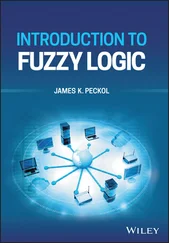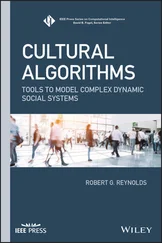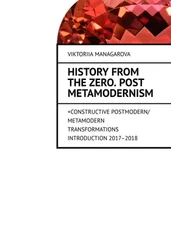WIDA offers a conference in October annually in various cities in North America for educators to learn from each other about WIDA’s resources. Internationally, it offers institutes, symposiums, and workshops. School districts and schools can arrange for a WIDA-prepared facilitator to conduct a workshop on topics such as differentiation, classroom action research, educator collaboration, formative language assessment, and purposeful lesson planning.
National and regional organizations
Other professional organizations TESOL and Applied Linguistics educators engage with are based on their specific interests, needs, and location/learner population. Here are some other organizations you may consider for professional development opportunities.
Organizations emphasizing foreign language perspectives
American Council of Teachers of Foreign Languages (ACTFL, https://www.actfl.org)—ACTFL is oriented to the teaching of world languages such as Chinese, Spanish, or Russian. As you now know, English is the foreign language in some locations. The organization is known for developing the first proficiency guidelines to determine an individual’s speaking ability in the target language. It has subsequently developed writing proficiency guidelines as well. It offers professional development such as an annual convention in November, oral proficiency interview (OPI) test preparation for teachers, publications, and advocacy engagement. The OPI test proctor preparation is thorough and highly valued by education programs. It has books on topics such as assessing language performance and language processing in our brains. The organization is also engaged with advocacy to raise public awareness of the benefits of additional language learning; on the website you can find advocacy resources and position statements.
Council of Europe ( https://www.coe.int/en/web/portfolio/home)—The Council of Europe created a set of proficiency guidelines that are employed widely throughout Europe, the Middle East, and South America. The proficiency guidelines are called the Common European Framework of Reference for Languages: Learning, Teaching, and Assessment (CEFR). Professionals in areas that utilize the CEFR will refer to learners’ proficiency levels simply by the level (A, B, C) and stage (A1, A2, B1, B2, C1, and C2). The CEFR helps instructors to orient their lessons to the proficiency level(s) of their students. You can read more about the CEFR at https://www.coe.int/en/web/common-european-framework-reference-languages/level-descriptions. The Council of Europe also offers tools for developing curricula, designing programs with reference to the CEFR, aligning instruction to the CEFR, and research to better understand language teaching and learning. Many other schools, school districts, and language schools utilize the CEFR and have developed resources that work within the CEFR, which can be found online.
Organizations emphasizing second language perspectives
Center for Applied Linguistics (CAL, https://www.cal.org)—CAL is “a nonprofit organization promoting access, equity and mutual understanding for linguistically and culturally diverse people around the world” (CAL, 2019). With the broad mission to work on topics related to both ELLs and world language learners, the organization conducts and distributes research on all topics related to the study, instruction, and assessment of additional languages. For example, it has projects on heritage language learners of English, parent engagement, cultural orientation, academic learning of ELLs, vocabulary instruction, and language policy. Resources it provides include brief reports and digests (free and downloadable), books, and teacher preparation materials on video. On the website, you will also find links to over 100 organizations and foundations related to learning/teaching/assessing language and understanding culture.
The Office of English Language Acquisition (OELA, https://www2.ed.gov/about/offices/list/oela/index.html)—OELA is part of the US Department of Education. Its goal is to “provides national leadership to help ensure that English Learners and immigrant students attain English proficiency and achieve academic success” (OELA, 2020). OELA also strives to support heritage language learners and bilingual, multicultural learners. It offers reports and research to help educators and lawmakers to guide educational policy decisions in additional to providing free tool kits for teachers working with English learners, families, and newcomer ELLs. OELA works closely with the National Clearinghouse for English Language Acquisition (NCELA, https://www.ncela.ed.gov), which funds and disseminates educational research on second language acquisition and learning. NCELA offers an online searchable library with over 20,000 resources that range from curricula to classroom materials and reports, fact sheets, and multimedia products. OELA offers an annual conference for recipients of the National Professional Development grants, which fund teacher preparation to work with ELLs and research on second language acquisition and learning.
Colorín Colorado ( www.colorincolorado.org)—Colorín Colorado is a relative newcomer to the field, but the organization has had a substantial impact on teachers of ELLs by offering practical, readily accessible instructional materials for immediate classroom use. Their goal is to provide resources for educators and parents on their bilingual (Spanish–English) website. For TESOL professionals, they offer streaming videos, articles, and resources that branch from ELL strategies and best practices to the specific practices themselves (e.g., lesson planning for ELLs includes selecting vocabulary, using graphic organizers, prereading a text, and writing content and language objectives), for example. In the ELL strategies and best practices section alone, there are nine overarching topics each with several concepts to be explored. The organization provides free book lists for different age groups, webcasts, and videos. Its resource library includes toolkits, policy information, research reports, and web resources. It also has recommendations for parents who are trying to help their child to read, supporting their child in their learning process, learning at home, raising bilingual children, and making informed choices when their child needs extra support.
Organizations emphasizing bilingual and multilingual instruction
Center for Advanced Research on Language Acquisition (CARLA, http://carla.umn.edu/index.html) CARLA is a leader in research on multilingual and multicultural learning. It freely shares the results of its research and action projects with educators through working papers (i.e., reports), databases, archives, and bibliographies. The resources it offers about acquiring new languages focus on content-based instruction, immersion, less commonly taught languages, and proficiency assessment. It has tech integration modules with training modules teachers can explore to increase their technology usage in L2 classes. Its virtual assessment center includes a virtual item bank that has test questions for seven different languages by proficiency level and language skill, which are valuable to any educator of L2s.
The National Association for Bilingual Education (NABE, http://nabe.org)—NABE is a leading organization focusing on bilingual language and multicultural instruction. The organization is primarily centered on the North American context, but does have four international affiliates. The organization offers an annual conference in February, symposiums, and institutes. The symposiums are organized like a mini conference, whereas the institutes resemble workshops. A recent topic of the symposiums and institutes was dual language instruction, for example. It offers publications on bilingual research and instructional practices and promotes bilingual materials for language learners. It is known for the advocacy work it did with the Seal of Biliteracy, which is awarded to schools, districts, or educational offices. The Seal of Biliteracy recognizes students who have attained proficiency in two or more languages by high school graduation. In creating this award, NABE led to positive recognition of the value of bilingualism.
Читать дальше












